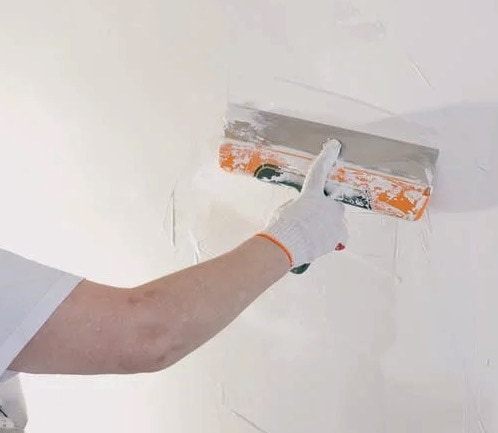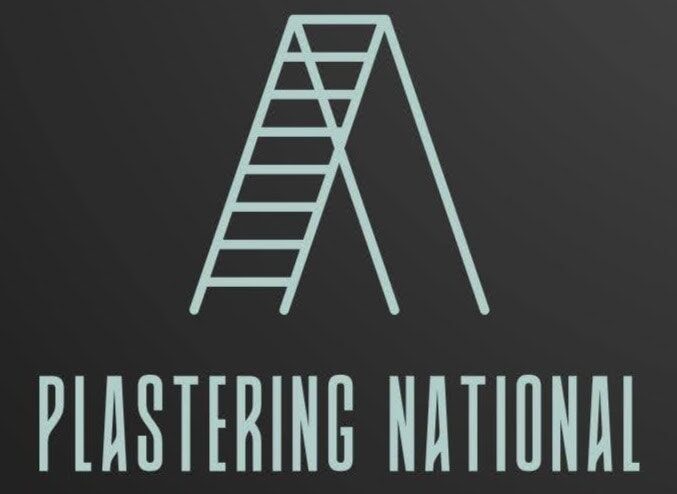Plastering involves coating walls and ceilings with a mixture that creates a smooth surface and enhances the building’s aesthetic and structural properties. It protects stones and bricks, reduces dust accumulation, and makes maintenance easier.
Cement and gypsum plasters are the two most common plasters used in construction.
Let’s get straight to the point.
Cement plaster and gypsum plaster are two common types used in construction, each with distinct properties.
Cement plaster is durable, weather-resistant, and ideal for exteriors and moisture-prone areas. However, it requires longer curing time and may develop cracks.
Gypsum plaster is lightweight, quick-drying, offers a smooth finish, and is better suited for interiors. However, it is sensitive to moisture and limited to indoor use.
While gypsum plaster is more eco-friendly and easier to apply, cement plaster is durable for exterior walls. The choice depends on location, durability, cost, and project timeline.
Cement Plaster Vs Gypsum Plaster: An Overview

Both cement and gypsum plaster offer distinct properties that influence their applications and benefits. Here’s a breakdown of the differences between these two plasters.
1. Composition
- Cement Plaster: The sand-to-cement ratio can be adjusted depending on the strength and finish required, allowing for flexibility in creating different textures.
Cement plaster’s dense composition makes it highly durable, providing excellent resistance to physical wear and environmental factors.
- Gypsum Plaster: It’s often combined with additives to enhance its workability and setting time, making it easier to apply.
Gypsum’s natural whiteness also contributes to a brighter finish, reducing the need for extensive painting or surface treatments.
2. Application Surface
- Cement Plaster: Its rough texture provides a good base for additional decorative layers like stucco or paint, improving the overall appearance of exterior walls.
Cement plaster is also favoured for its ability to adhere strongly to masonry surfaces, enhancing the structural bond.
- Gypsum Plaster: Its smooth finish makes it ideal for interior walls that need a polished look without further treatment. Gypsum plaster’s versatility in application allows it to be used for detailed decorative work, such as mouldings and ceiling designs.
3. Shrinkage And Cracking
- Cement Plaster: Proper curing techniques are essential to minimise shrinkage and prevent cracks from developing.
Even with precautions, the surface may require additional treatment to mask fine cracks that appear over time.
- Gypsum Plaster: Its ability to resist shrinkage makes it a reliable option for creating long-lasting, crack-free surfaces. This quality is particularly useful in high-precision work, where maintaining the integrity of the finish is important.
4. Cost And Time Efficiency
- Cement Plaster: The labour and time required for curing and surface preparation can reduce cement plaster’s cost-effectiveness.
However, its lower material costs in large-scale projects make it a budget-friendly choice despite the longer installation period.
- Gypsum Plaster: The lack of curing time accelerates the construction process and reduces labour costs, making it a preferred choice for fast-paced projects. This quick setting time also allows for early application of paint and finishes, further speeding up the project timeline.
Detailed Comparison: Cement Plaster Vs Gypsum Plaster
1. Thickness Requirements
- Cement Plaster: The minimum thickness starts at 10 mm. It is used in various thicknesses to achieve various textures and finishes.
- Gypsum Plaster: Generally applied at a thickness of 8 mm for ceilings and 11 mm for walls.
2. Weight Considerations
- Cement Plaster: Heavier than gypsum, which might add to the structural load.
- Gypsum Plaster: Lighter and easier to handle, reducing the overall load on the building structure.
3. Waste Production
- Cement Plaster: Often results in more material wastage during application.
- Gypsum Plaster: Minimal wastage due to its pre-mixed, ready-to-use form.
4. Bonding Capabilities
- Cement Plaster: Needs a rough surface for proper bonding, which can be
time-consuming to prepare.
- Gypsum Plaster: Adheres well to rough and smooth surfaces, offering flexibility in application.
5. Fire And Rust Protection
- Cement Plaster: Initially fire-resistant but may lose integrity over time.
- Gypsum Plaster: Acts as a fire-resistant barrier and helps prevent metal components from rusting.
Pros And Cons Of Cement Plaster
Pros
- Versatile Usage: Suitable for both interior and exterior walls.
- Weather Resistance: Offers excellent protection against moisture, heat, and pollutants.
- Durable Surface: Provides a sturdy base for drilling, wiring, and other installations.
Cons
- Extended Curing Time: Requires wet curing for about a week, increasing labour and water costs.
- Rough Finish: Often needs additional finishing with Plaster of Paris (POP) for a smooth surface.
- Susceptible to Cracking: Prone to developing small cracks due to its tendency to shrink.
Pros And Cons Of Gypsum Plaster

Pros
- Quick Application: Dries faster than cement plaster, allowing for quicker progression to painting.
- Smooth Finish: Provides a smooth surface that does not require additional POP punning.
- Fire Resistance: Excellent resistance to fire, enhancing the structure’s safety.
- Low Shrinkage: Minimises the risk of cracks and imperfections.
- Eco-friendly: Gypsum is recyclable, making it a more sustainable choice.
Cons
- Limited to Interiors: Not suitable for exterior walls or areas exposed to high moisture.
- Sensitivity to Water: It can deteriorate when exposed to moisture, limiting its use in kitchens, bathrooms, and outdoor areas.
- Requires Careful Handling: Cracks can develop if holes are drilled into them for fixtures and fittings.
Environmental Impact And Sustainability
Cement Plaster
Cement plaster is less eco-friendly due to its high-energy manufacturing process and requirement for extensive water curing. Its production also generates significant CO₂ emissions, contributing to global warming.
Cement plaster extraction can destroy habitats and increase resource depletion. Additionally, it is not biodegradable, posing disposal challenges.
Efforts to improve its sustainability focus on using alternative materials or reducing its carbon footprint.
Gypsum Plaster
Gypsum plaster is more sustainable as it can be recycled and reused. It requires no water curing, which conserves resources. Due to its energy-efficient manufacturing process, gypsum plaster has a lower carbon footprint than cement.
Gypsum can be produced from industrial by-products like flue-gas desulphurisation, reducing waste and reliance on natural gypsum mining. However, proper disposal of gypsum plaster is essential to prevent the release of sulphur gases into landfills.
Best Uses Of Cement Plaster And Gypsum Plaster
Cement Plaster
- Best for Exteriors: Its durability makes it ideal for outside walls, which can withstand environmental stress.
- Moisture-prone Areas: Suitable for wet areas like bathrooms and kitchens, where gypsum would deteriorate.
Gypsum Plaster
- Ideal for Interiors: Perfect for creating smooth, paint-ready surfaces inside homes and offices.
- Quick Projects: Suitable for construction projects requiring fast turnaround times due to its rapid drying properties.
Choosing The Right Plaster For Your Project
When selecting the best plaster for your needs, consider the environment, application area, and project timeline. Here are a few tips:
- Exterior Walls: Use cement plaster for its resilience and durability against weather.
- Interior Walls: Opt for gypsum plaster for its smooth finish and easy application.
- Moisture-Rich Areas: Stick with cement plaster to avoid damage and deterioration.
Conclusion
Cement and gypsum plaster have strengths and weaknesses, depending on their intended use. Due to its robustness and resistance to environmental factors, cement plaster is best suited for outdoor use.
With its smooth finish and quick drying time, Gypsum plaster is ideal for indoor spaces.
Understanding these differences will help you make an informed decision for your project, balancing cost, durability, and ease of use.
If sustainability and quick project timelines are priorities, gypsum plaster is a solid choice. However, cement plaster remains a reliable option for the ultimate exterior protection.
Frequently Asked Questions About Plaster
Is Gypsum Stronger Than Cement?
Gypsum plaster is also a green product as it can be recycled and reused. At times walls plastered with cement may develop cracks or shrinkage after a few months, but gypsum plaster remains fault-free for a longer time. However, it doesn’t mean it is stronger and more durable than cement.
What Are the Disadvantages of Gypsum Plastering?
- It doesn’t perform well against water. We cannot use gypsum plaster for outer walls.
- Costly. If you compare cement plaster to gypsum plaster, the latter is costlier for the same thickness level in most conditions.
- Low shelf life. Gypsum, as a material, comes with a limited shelf life.
Is Gypsum Plaster and White Cement the Same?
Cement plaster can be used on exterior and interior surfaces. However, whereas gypsum plaster can only be used on the ceiling and interior walls, it cannot be used in wet areas like toilet baths, kitchen wash areas, balconies, etc. At the same time, gypsum plaster gives a very smooth finish which makes it compatible with paints.
Can You Mix Cement and Gypsum?
Mixing Cement and Gypsum
You can use a pre-mixed product combining the cement ingredients with the right amount of gypsum. You can also mix them yourself. As soon as you add water to the mix, the hardening process begins.
Is Gypsum Plaster Durable?
It has been used for centuries in the construction field due to its excellent properties. For example, the ancient Egyptians used it to plaster the pyramid at Cheops. The usage of gypsum plaster as an internal plaster in the Pyramid of Giza of Egypt is proof of its durability and performance.

